Description
The 45 Chair is the definition of a true masterpiece, and has become symbolic for Finn Juhl’s design genius. The chair was presented at the Copenhagen Cabinetmaker’s Guild Exhibition in 1945 and has been called “the mother of all modern chairs” by the Japanese professor and chair expert Mr. Noritsugu Oda.
This chair was one of the first to break free of the current tradition for armchairs by freeing the upholstered areas from the wooden frame. With the 45 Chair, Finn Juhl created an elegant chair in this innovative style that he had been working towards for many years. The result was a clean, strong and elegant chair and a quiet revolution.
The space between the frame and the seat creates a lightness, which, combined with its organic shape and sublime detailing, creates a unique beauty. The chair is also extremely comfortable and thus appeals to all senses.
The 45 Chair is manufactured in teak, oak or Dark Walnut and upholstered with fabric or leather.
Material & Feature:
- Structure: hardwood frame with double dowesl and corner-block-reinforcing
- Medium firm cushion seat feel (Customizable cushion softness)
- Fabric, Top Grain/Aniline Leather upholstery (C.O.M available)
- Solid wood legs/frame with natural oak finish
- All materials are fire-retardant & non-toxic (Baby friendly)
About the Designer
When you look at the graceful shapes and sensual curves of Finn Juhl’s work, you may be shocked to realize that he designed these pieces 60 to 70 years ago. A pioneering force in his own country, Finn Juhl is also credited, along with fellow Danes Arne Jacobsen, Hans Wegner, Borge Mogensen and Poul Kjaerholm, with introducing Danish modern to midcentury America.
Although he initially wanted to become an art historian, his father persuaded him to attend the Royal Danish Academy of Fine Arts School of Architecture. By 1934, he had a prestigious position with architect Vilhelm Lauritzen and was exploring the functionalism movement by creating clean, geometrical buildings like the broadcasting house Radiohuset, a pinnacle of Danish architecture that now houses the Royal Danish Academy of Music.
Juhl considered himself an architect of the interior as well as the exterior. He began designing furniture like the Poet Sofa (1941) for use in his own home, located north of Copenhagen. Juhl felt that furniture, handicraft and art should create a completeness of the house, which in his case was decorated with works by the Danish painters of the time. Today, the Finn Juhl House – an early example of open-plan design with views to its garden from every room – is part of the Ordrupgaard Museum.
In 1937, Juhl began collaborating with master cabinetmaker Niels Vodder, and the pair was the buzz of the 1945 Cabinetmakers’ Guild exhibition with their expressive, sculptural pieces. One such item was the Model 45 Armchair (1945), which broke from tradition by freeing the upholstered areas from the wood frame.
At age 39, Juhl made his U.S. debut in 1951 at the Good Design exhibit in Chicago and at MoMA in New York, and he represented Denmark in creating the interior of a meeting hall at the United Nations headquarters. A few years later, SAS asked Juhl to redesign the interior of its air terminals in Europe and Asia.
Finn Juhl is still winning awards decades after his death: The Wallpaper Design Award 2010 was awarded to the Baker Sofa (1951) in the category of Best Reissue.
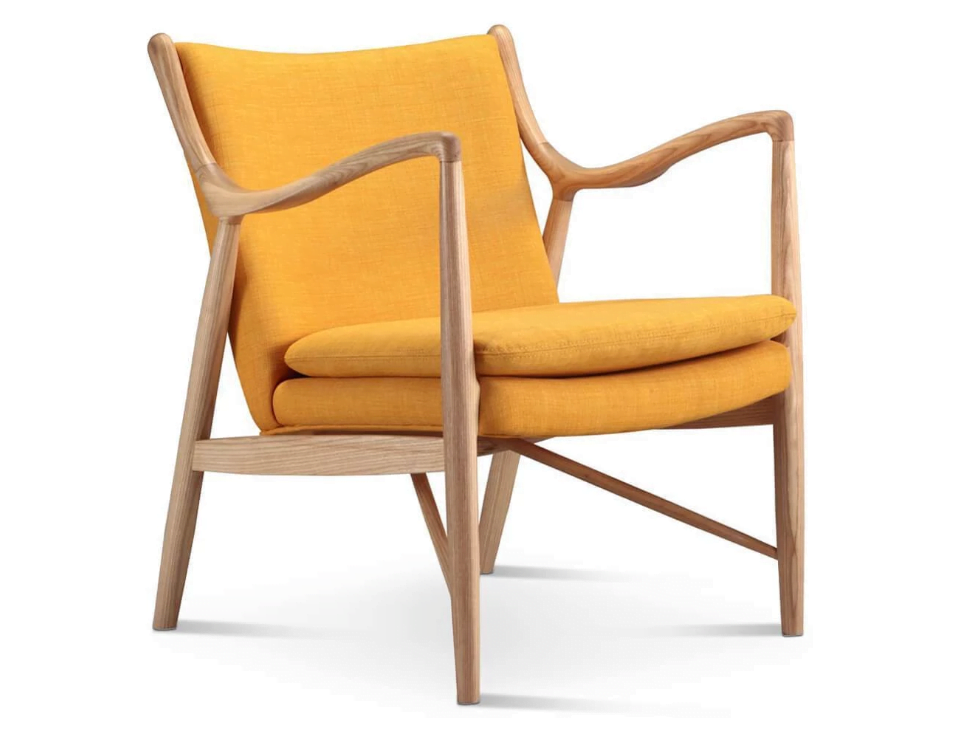
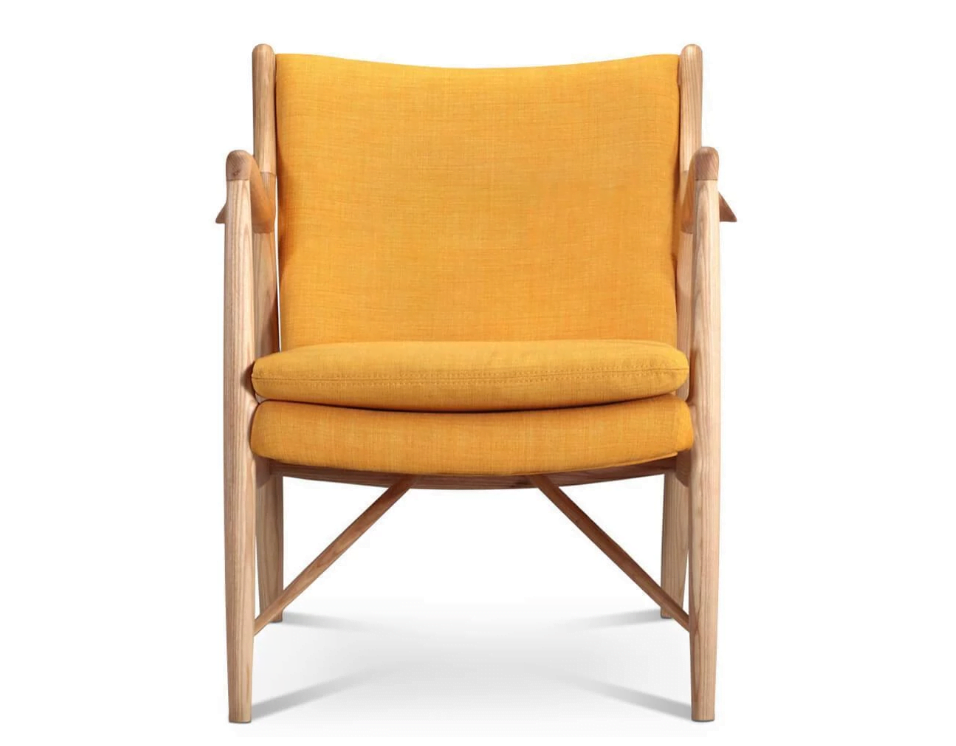
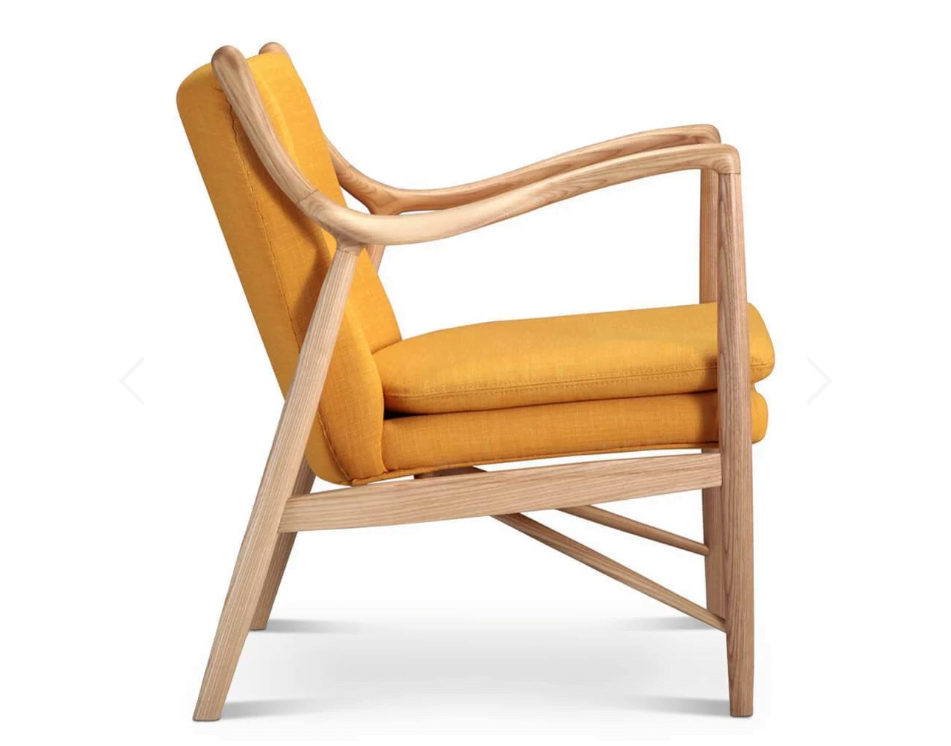
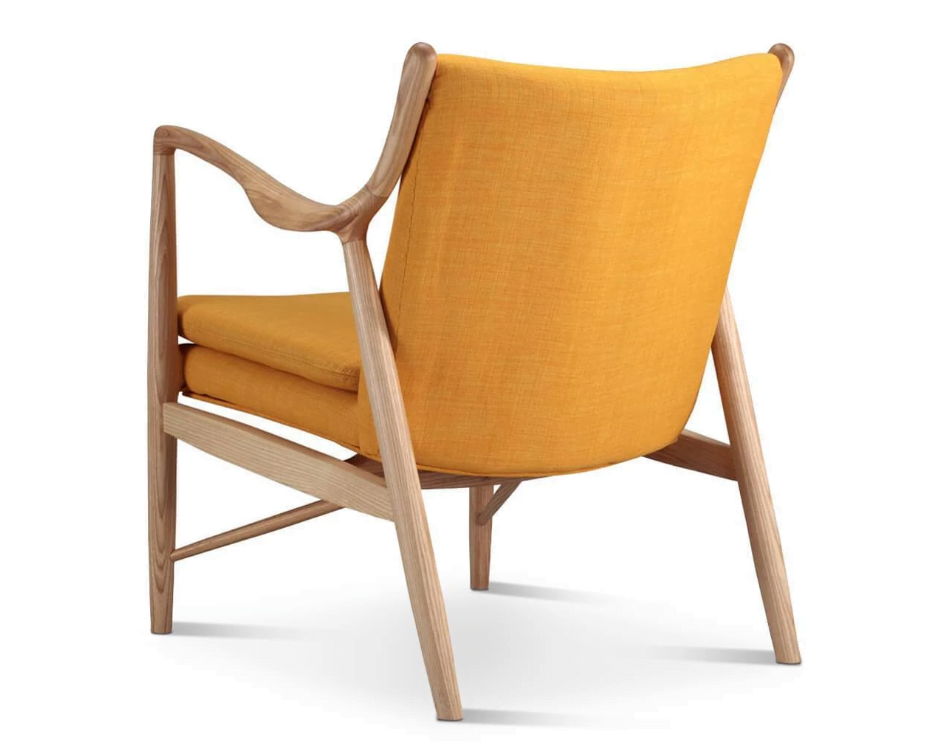

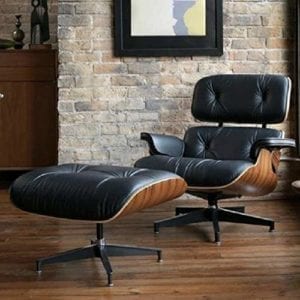
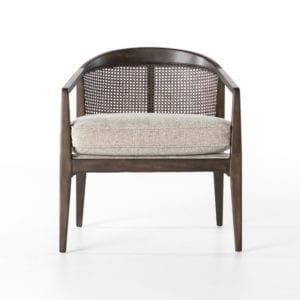

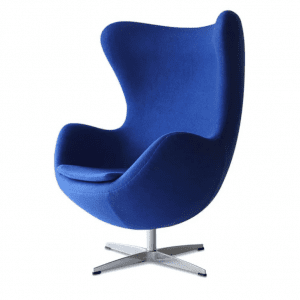



Reviews
There are no reviews yet.